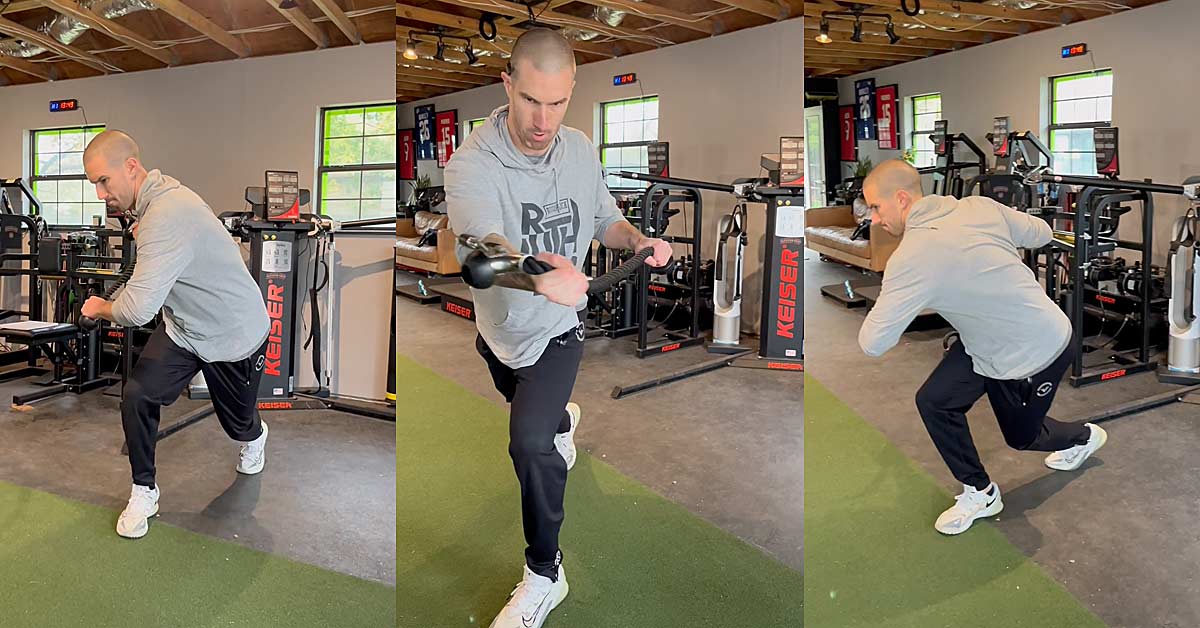
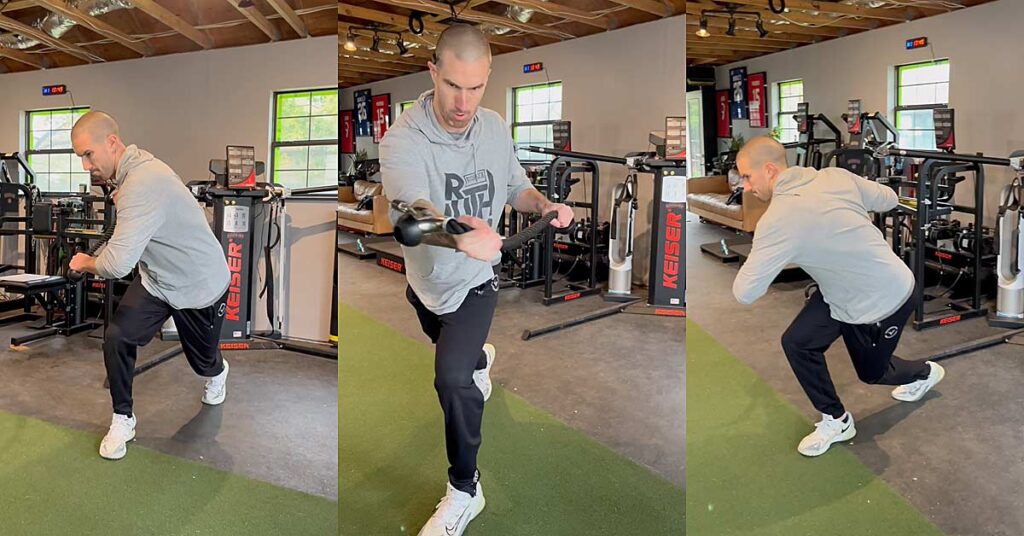
Core energy, together with defining the requisite anatomy, has been a longstanding matter of debate amongst energy coaches and practitioners. Regardless of the paradox and dismissiveness surrounding the topic, I’ve discovered vital worth in emphasizing core energy with nearly any athlete I’ve ever labored with. This turned significantly evident throughout my time working with Navy SEAL personnel, who are sometimes tormented by in depth accidents and motion limitations.
Regardless of sport or level of play, the core is essential for connecting and coordinating movements while also playing a primary role in transmitting kinetic forces, says @danny_ruderock. Click To Tweet
Relative to standard athletes, whatever the sport or degree of play, the core is crucial for connecting and coordinating actions whereas additionally enjoying a main function in transmitting kinetic forces. On this article, I’ll cowl particularly what the core is, why it’s vital for sport efficiency, and, importantly, how we will get probably the most out of our coaching to enhance core energy and performance by using the Keiser.

Defining and Understanding the Core
Anatomically, the core could be noticed as any muscular tissues, connective tissue, or fascia that connect to or act on the backbone, rib cage, or pelvis. Collectively, these tissues act to flex, prolong, rotate, or bend the adjoining appendicular skeleton and help in connecting the higher and decrease extremities.
From a purposeful sense, the core muscular tissues are organized in a singular method and have a tendency to have decrease relative contractile capacities than the muscular tissues of the arm or leg. Moreover, these are usually smaller muscular tissues with smaller cross-sectional areas whereas additionally having a wider vary of orientation and pennation angles attributable to possessing extra exact mechanical actions. As an illustration, the quadratus lumborum (QL) and the transverse abdominis are important core muscular tissues and, regardless of their comparatively low contractility, play a key function in stabilizing and integrating the pelvis and rib cage.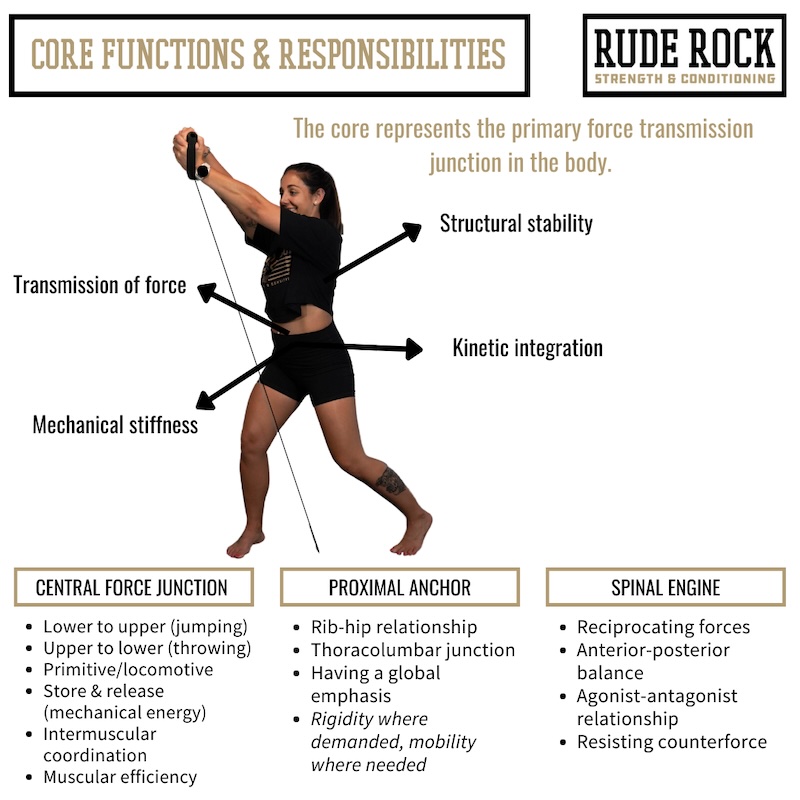
One other manner of understanding core anatomy and performance is by observing the physique by a fascial lens, which is one thing I’ve mentioned at nice lengths through the years. Because it applies right here, the myofascial traces present an ideal illustration of the direct interconnectedness of the human physique and the integrative operate of our anatomy—no muscle ever, in any case, works in isolation.
As proven within the graphic under, the first myofascial traces embody a number of essential core muscular tissues, such because the lats, adductors, glutes, and obliques. After we are in a position to get past the myopic view of impartial muscular tissues and their remoted actions, we will higher see the demand for having a number of impartial buildings offering particular capabilities that contribute to a worldwide sample or end result. This, within the purest sense, is how the core capabilities.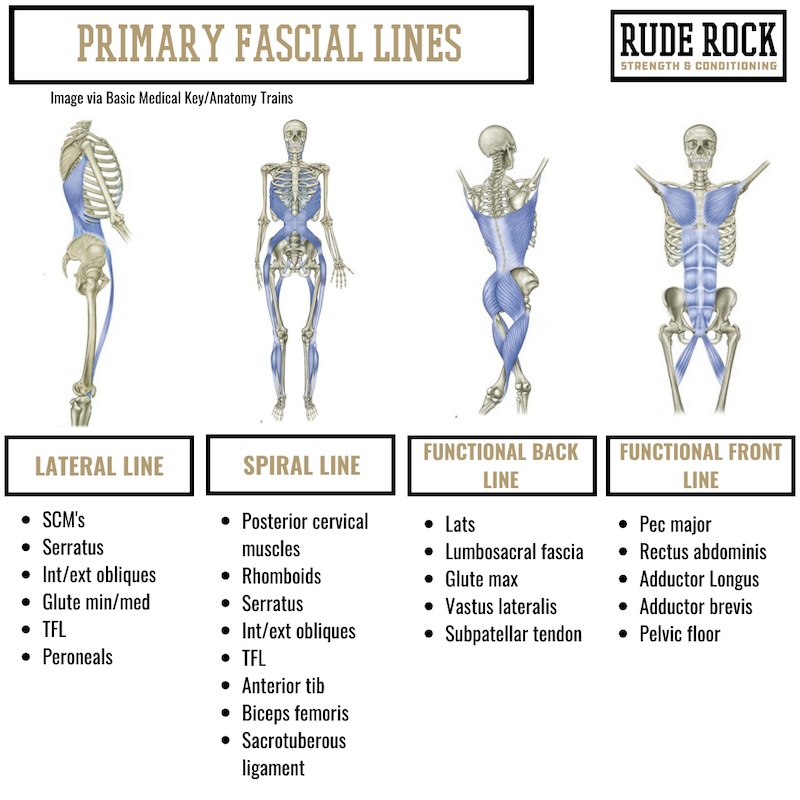
The operate of the core is multifaceted, however it may well primarily be seen as transmitting and connecting forces all through the physique. This requires some mixture of resisting forces, managing reciprocating forces (torque), rotating, bending, and transmitting forces. Widespread and simple examples of this embody coordinating hip and arm motion throughout sprinting, sustaining pelvic stability throughout single-leg touchdown, and thoracic rotation and trunk reciprocation throughout throwing actions. Analyzing the core on this manner ought to assist to light up the parallels to the first fascial traces and the way this considerably expands the related muscle teams and actions that may be categorized as core coaching.
Rather than seeing core training as applying independent exercises, view core training as standard, global patterns that are modified to emphasize certain mechanical actions of the core. Click To Tweet
You shouldn’t want me to inform you, however particular or remoted core actions like crunches, leg lifts, Russian twists, and many others., ought to seldom, if ever, be utilized. The traditional purposes of core coaching have very restricted redeemable worth for athletes. Fairly than seeing core coaching as making use of impartial workouts, view core coaching as customary, international patterns which might be modified to emphasise sure mechanical actions of the core. These customary patterns ought to merely mirror the actions and positions noticed in sport.
As an illustration, versus doing an ordinary Palloff press or static cable chop, combine these actions into greater patterns like lunges, locomotion, or bending. Having the athlete transfer from positions which might be generally skilled in sport whereas stressing the predominant vectors is basically the boundary from which you must work. And that is the place the Keiser comes into the highlight.
Advantages and Purposes of the Keiser
As I coated in a earlier article discussing the Keiser for arm care, the overarching profit to utilizing the Keiser is the big selection of variability that it may well add to the actions being carried out. Moreover, the Keiser makes it very simple to duplicate sport-specific positions, patterns, and vectors; by default, I suppose this is the reason I discover a lot worth in utilizing the Keiser for core coaching.
The flexibility to load a number of planes, patterns, and positions is crucial for helpful core coaching. After we can regulate the peak and angle of the arms and make the most of very exact loading, we will stress nearly any fascial line and/or muscle group. The dynamic fulcrum of the Keiser supplies a method to load very particular patterns, which could be helpful by permitting athletes to maneuver by patterns or sequences which might be extra snug or efficient.
Whereas we wish to see sure foundations of motion, an overemphasis on “excellent” weight room method could turn into consequential for athletes. Because of this, I emphasize variability with Keiser actions for my athletes. I imagine a foundational ingredient of core coaching is having some degree of reactiveness built-in into the coaching, and when utilizing the Keiser, no two reps shall be equivalent.
I believe a foundational element of core training is having some level of reactiveness integrated into the training, and when using the Keiser, no two reps will be identical, says @danny_ruderock. Click To Tweet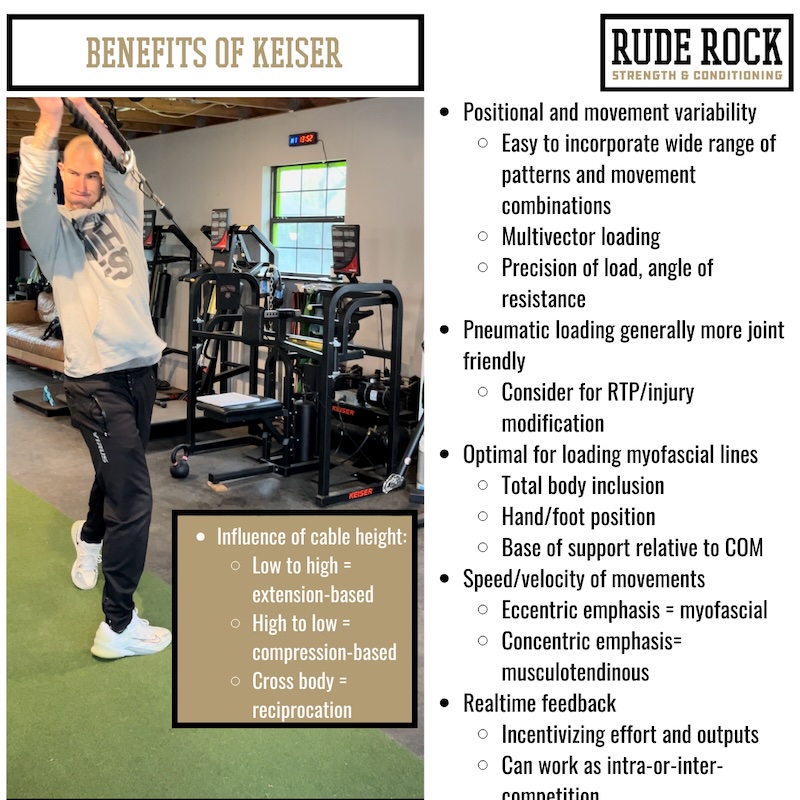
The resistance kind is one other definitive function of the Keiser tools and a facet that’s helpful for core coaching. As I’ve coated, transmitting forces and connecting motion patterns is the central operate of our core. The pneumatic resistance mechanism permits athletes to speed up utterly by ranges of movement, one thing not doable with static loading. However, in doing so, we’re in a position to stress the core at angles and ranges that simply aren’t doable with most up to date tools or load varieties.
An essential observe right here can also be the importance of making use of eccentric load to the core in all these positions. The muscular tissues of the trunk—obliques, transverse abdominis, QL, glute med.—are not often eccentrically loaded throughout every day life, sport, or customary coaching. I’ve discovered a number of worth in making use of eccentric tempos throughout patterns that stress these areas.

Amplifying Core Coaching with Keiser Actions
Collectively, between the positions, ranges, and vectors we’re in a position to work by, together with the pneumatic resistance kind offered, the Keiser provides a premium alternative for strengthening the core. Whereas only a handful of the numerous actions you may make the most of for the needs of core coaching, the six workouts listed under are those I are inclined to program incessantly with my athletes.
Some basic notes and framework for every of the next actions:
- Every of those could be thought-about an intermediate to superior motion.
- They need to be categorized as accent (Block 2–4) actions.
- They need to be carried out for two–3 units of 5–8 reps.
- These ought to be progressed by elevated load, tempo purposes, stressing new ranges/vectors, adjusting load placement or implement, or including variability to combos/actions.
- Though the Keiser could be seen because the optimum means for loading, you may successfully replicate most of those workouts with an ordinary cable or band setup.
1. Cross Row to Press
What I like:
- Controlling foot COP all through transitions of motion.
- Reciprocating trunk (thoracic) motion.
- Scapular demand/motion.
Video 1. Cross Row to Press.
2. Ahead Lunge with Cross Chop
What I like:
- Spring motion of again foot underneath load.
- Scapular demand/thoracic attain.
- Eccentric load on obliques.
Video 2. Ahead lunge with Cross Chop.
3. OH Facet Bend from Cut up
What I like:
- QL and indirect eccentric loading.
- Lateral line/lat stretch.
- Ipsilateral compression of rib cage.
Video 3. OH Facet Bend from Cut up.
4. Dynamic Drop to Cut up
What I like:
- Rib-hip disassociation (dynamic).
- Thoracic attain.
- Hip IR/foot pronation management.
Video 4. Dynamic Drop to Cut up.
5. Curtsy to Lateral Lunge with OH Attain
What I like:
- Mixture of lunge patterns (adductors/abductors).
- Thoracic-pelvic coupling.
- Loaded lateral hip flexion.
Video 5. Curtsy to Lateral Lunge with OH Attain.
6. Dynamic Rotational Extension
What I like:
- Loaded dynamic extension (safely).
- Closed chain hip inside rotation.
- Excessive-velocity coordination.
Video 6. Dynamic Extension.
Keiser Is an Asset
Keiser tools has turn into more and more widespread over the previous couple of a long time, and though it is probably not a requirement for efficient coaching and programming, it’s definitely an incredible asset. As this is applicable to core coaching, there are a number of benefits to implementing Keiser for core work. Past the flexibility, precision of load, and allowance of a variety of vectors to maneuver by, the Keiser permits the athlete to maneuver intuitively and naturally in ways in which greatest replicate the patterns noticed in sport.
The Keiser permits the athlete to move intuitively and naturally in ways that best replicate the patterns observed in sport, says @danny_ruderock. Click To Tweet
For all intents and functions, Keiser work—particularly core-specific work—could be seen primarily as accent choices which might be carried out after your huge/main lifts. In some instances, akin to return to play, we will make the most of the Keiser patterns extra as main actions, however for traditional instances, these workouts sometimes populate my later blocks.
I encourage you to be experimental with these patterns and, reasonably than simply seeing elevated load as the one route for development, make the most of an array of hand and physique positions, motion combos, and instructions of utilized load. You’ll be able to progress and develop these actions in limitless methods, and I imagine coaches ought to prioritize this as they give the impression of being to progressively improve the calls for of core coaching.
Because you’re right here…
…we’ve a small favor to ask. Extra individuals are studying SimpliFaster than ever, and every week we convey you compelling content material from coaches, sport scientists, and physiotherapists who’re dedicated to constructing higher athletes. Please take a second to share the articles on social media, have interaction the authors with questions and feedback under, and hyperlink to articles when acceptable when you have a weblog or take part on boards of associated subjects. — SF
